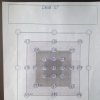Abiqua
Well-Known Member
I wouldn't chance it uzer.....too closeThen it seems, with 36v with 1.4A is no-no...
Leaving yourself a little room in the Max VF never hurt any lighting design. I say go for the 39V.
I wouldn't chance it uzer.....too closeThen it seems, with 36v with 1.4A is no-no...
It seems risky to me dawgThen it seems, with 36v with 1.4A is no-no...
Can these still be used safely on cxa3070s ? I bought 4 of them from the same seller. I was hoping to use them until I get the better driversPerfectdeal_US got 50W drivers back in stock but unfortunately they are different
1.26A and 88.5% efficient, non power factor corrected. Hopefully they will refund but it was a deal outside of eBay.
View attachment 3324232


 http://www.ebay.com/itm/Inventronics-160w-Led-Driver-Constant-Current-Type-Quad-Channels-Model-EUC-160-/131326829431?pt=BI_Control_Systems_PLCs&hash=item1e93b06377
http://www.ebay.com/itm/Inventronics-160w-Led-Driver-Constant-Current-Type-Quad-Channels-Model-EUC-160-/131326829431?pt=BI_Control_Systems_PLCs&hash=item1e93b06377@SupraSPL posted about these a few weeks ago. Seems the only thing he reported out of the ordinary was when less than all 4 channels were hooked up, did it act funny...87-89% efficient I believe is what he measured....Has anyone tried the Inventronics 4 channel like this http://www.ebay.com/itm/Inventronics-160w-Led-Driver-Constant-Current-Type-Quad-Channels-Model-EUC-160-/131326829431?pt=BI_Control_Systems_PLCs&hash=item1e93b06377View attachment 3331551 View attachment 3331551 http://www.ebay.com/itm/Inventronics-160w-Led-Driver-Constant-Current-Type-Quad-Channels-Model-EUC-160-/131326829431?pt=BI_Control_Systems_PLCs&hash=item1e93b06377
 ]
]Sounds about right to mei hook up today 4 cxa3070 ab to this driver hlg185h-c1050b and then check draw volts ,it was approximately draw 136 volt ,which seems strange to me ,i know each diode should be able draw 38.5 volts at least ,but somehow driver acting weird or may be i do something wrong ? then i pull my apogee par meter and check reading at 24 inches and it show me 90 paron 12 inch it was around 320 par .Is this numbers seems ok to you guys ?Seems to me it is very weak ... May be i bought wrong drivers ?
But it is way low ,to grow anything ,i am not sureSounds about right to me
Hmm ,it doesn't sounds right to me .Supra or GG what you say ? Did you ever use apogee meter to check it ?Sounds about right to me



May be hlg185h-c1400 is more powerful option than hlg185h-c1050 ? I don't use anything to dim it .Right i place 12 cxa 3070 ab h on 3 drivers hlg185h-c1050 ,and draw from wall was 509 watt , 4.4 amp . When i use damn apogee meterThe 34v a piece is strange. And the par reading is low imo. COBs are not intense as we usually know it...par numbers and distance form source. Then spread/desing plays a big roll in PPFD readings.
Apogee uses the worst of the quantum meters sensors. The others are more accurate...specially the one li-core uses. But they over estimate for the lack of sensitivity in the upper ranges. So it does even out if the spectrum is somewhat sun like(like WW leds).
The only absolutes are spectroradiometers...all the others are great practical ways to get consistant and fairly accurate measurements. I have tested apogee vs licore vs spectroradiometer...they are all very similar, specially apogee vs licore(even using illumitex spectrum...very 660 heavy, as well as AT an IG spectrums)...but spectroradiometer gives the highest and most accurate readings.
With all that said about meters...the meter is not the problem I guarantee. You need to find out the current that is goign into them for us to really know where is issue is.
I have 6 cxa's(4K AD bin) somewhat clustered on a heatsink using a hlg120h-c700...and I get >600µmols at 18"
My drone is has 6 cxa(3K AB bin) spread out but driven 2X as hard(1400ma) using 2 hlg185h-c1400...and I get good numbers at ~12"
Here is my drone at 12"(3x3) and 24"(4x4) for reference. 1400ma ~10" on center
View attachment 3332334 View attachment 3332335 View attachment 3332336
